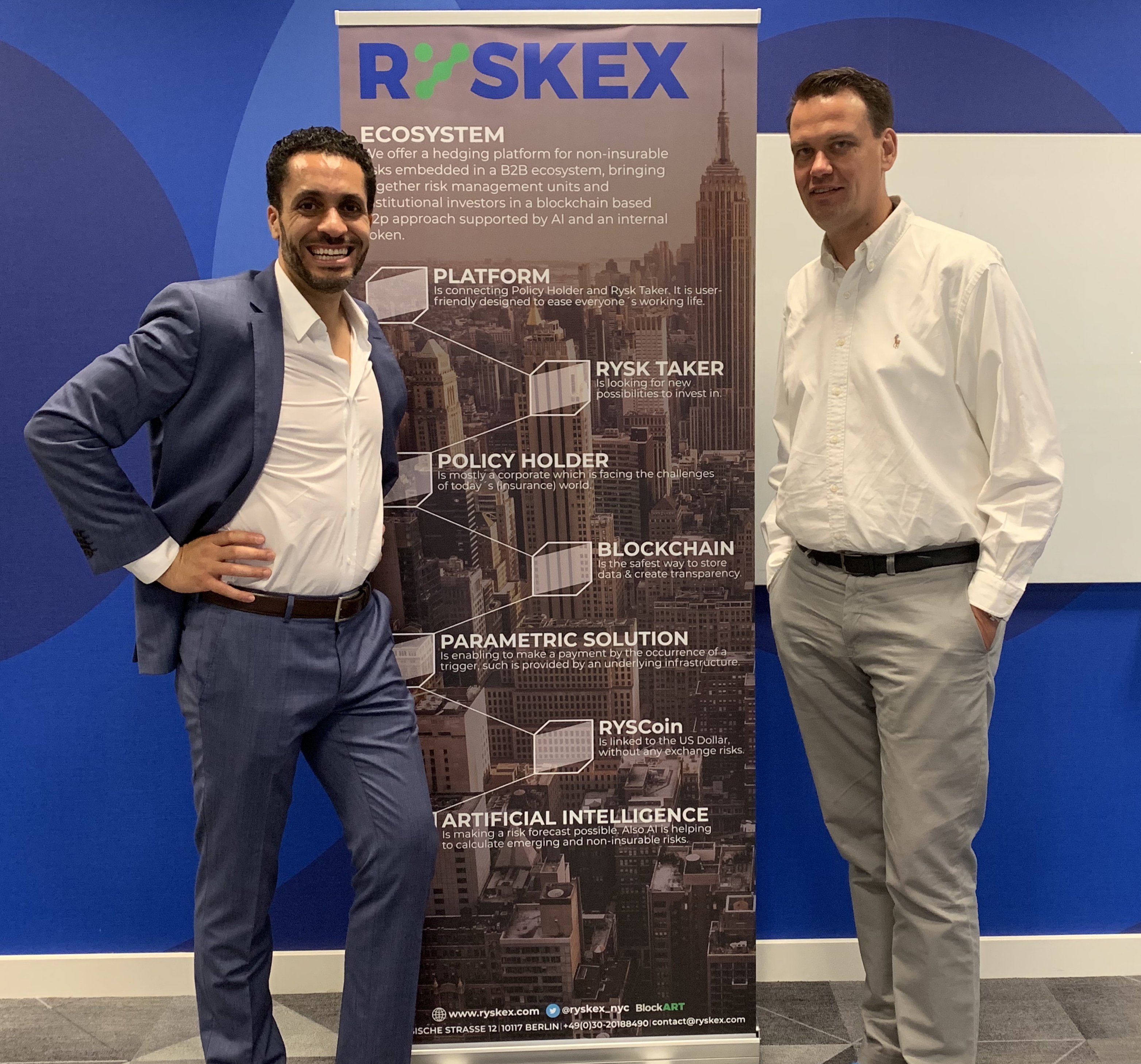
Dr. Marcus Schmalbach is the CEO and co-founder of Ryskex, a provider of a blockchain-based ecosystem for alternative risk transfers and innovative insurance solutions. In this podcast we discuss Risk Transfer 2.0 from a perspective of how to use blockchain and AI solutions for new and emerging risks.
What is blockchain?
Candidly, Marcus, Googled what is blockchain to get the following definition: “a decentralised distributed and public digital ledger that is use to record transactions across many computers”. However from his personal point of view, blockchain is an upcoming and interesting technology for the insurance market that will have a great impact on that industry.
What is Ryskex and what is its vision?
Ryskex stands for risk exchange. It offers a hedging platform focusing on emergent and non-insurable risk in a b2b ecosystem.
They bring together risk managers of traditional insurance companies or captive owning companies and institutional investors who have a risk appetite. Ryskex uses both blockchain, a private version of Ethereum, and AI technology in running its platform.
What is Risk Transfer 2.0?
Risk Transfer 2.0 is fundamentally two points:
- Covering risks in innovative ways such as the use of parametric based solutions
- Covering new upcoming risks like globalisation and ones engendered by digitisations such as cyber risks
Cyber insurance for example is very difficult to price and to understand the real risks associated to cyber. As it’s a relatively new risk there isn’t sufficient data on the kind of exposures that could happen that weren’t conceived of. New solutions have to be designed based on this limited set of data. However Cyber risk is only one example of such new risks, we have reputational risk and especially climate change risk that can have a large impact on the corporate risk landscape. All of these new emerging risks cannot be tackled using traditional approaches and thus require new solutions.
What role does data play?
The question thus comes to mind is that does the data exist or are insurance companies simply not capturing the right kind of data? Marcus agrees that the data is existing but isn’t necessarily being captured by insurance companies.
Parametric insurance has a trigger that initiates a claim process. Having the right data to act as the trigger is critical. Ryskex works with insurance companies to help determine what is the right trigger for a parametric insurance. In the case of cyber insurance a trigger can be agreed between the policy owner and the risk taker. For example a double trigger model can be used when there is a data breach (1st trigger), which when reported by the press will ultimately lead to a fall in their share price (2nd trigger).
Ryskex is working with some syndicates in the London market to design these kinds of solutions over the next few months and offer them in a parametric solution.
New risks require new infrastructures
Marcus recognises that there is a lot of scepticism in the insurance industry with regards to both AI and blockchain technology. However, in addition to the recognised benefits that blockchain can bring, Marcus believes that blockchain helps to make claim adjustments and parametric payments a lot more cost effective. The AI component will have a large impact on the underwriting or the risk and its pricing.
PRICE (political sanctions, reputation damage, innovation failure, cyber-attacks and equity) model
At the moment there are risk which are hard to cover or who are insurable on the market.
Reputational risk in an era of social media is increasingly difficult to manage when CEOs or politicians can turn to Twitter to express their views whether personal or not. This is an example of an emerging risk that is in great demand but in low supply on the market.
Ryskex was in the 2ndcohort at Lloyd’s Lab over the last 4 months working on covering cyber in a parametric way (parametric cyber cover). They worked very closely with Akash Bharadia and his team from AXIS Capital, on designing parametric cyber cover.
The captive insurance opportunity
Earlier this year Marcus received a call from the Governor in Vermont as they were planning to set up the DLGA in order to remain the number one captive domiciled in the world. He recognised the need to look for new technologies and new opportunities for their clients and he believed that blockchain is an integral part of that opportunity. Ryskex isnowa member of the Distributed Ledger Governance Association (DLGA) and the Vermont Captive Insurance Association (VCIA) there.
60% of Lloyd’s business comes from the US and most of it is from captive related one. Vermont being the number one captive domiciled in the world and Ryskex being in the Lloyd’s Lab puts them in a prime position to develop parametric insurance solutions for captives for those two markets.
New business models?
Marcus responded to the question that the data being used to develop new parametric solutions could be used to develop new business models that moves from risk transfer to risk mitigation. He believes this is a fantastic opportunity that kind of reminds him on the movie: Minority Report.
Marcus believes that in some areas we could use the power of AI to predict forthcoming risks in order to develop mitigation strategies to avoid it.







